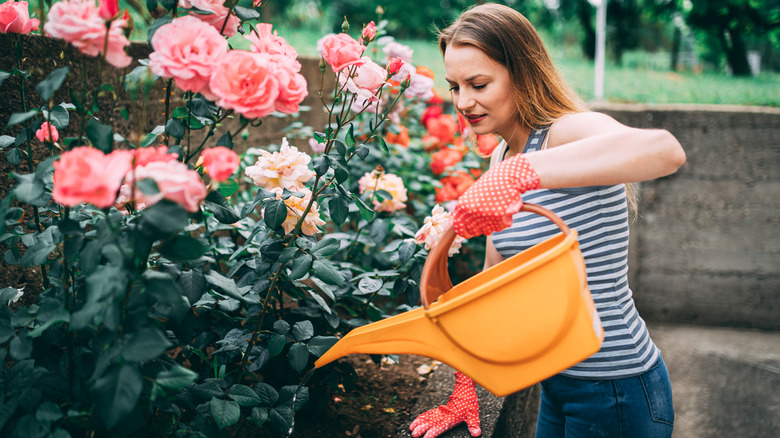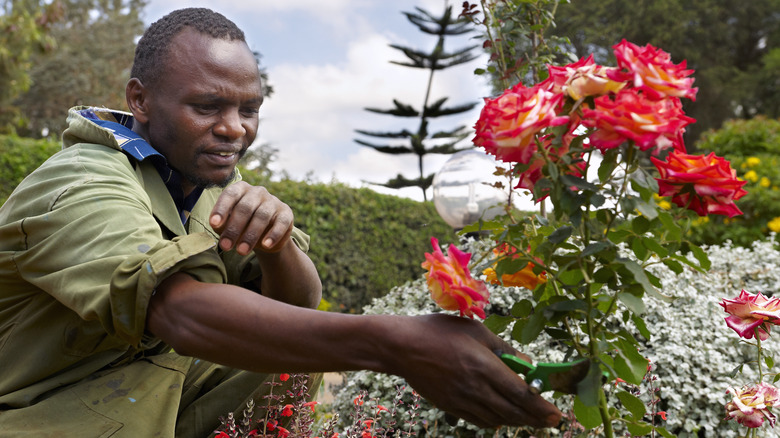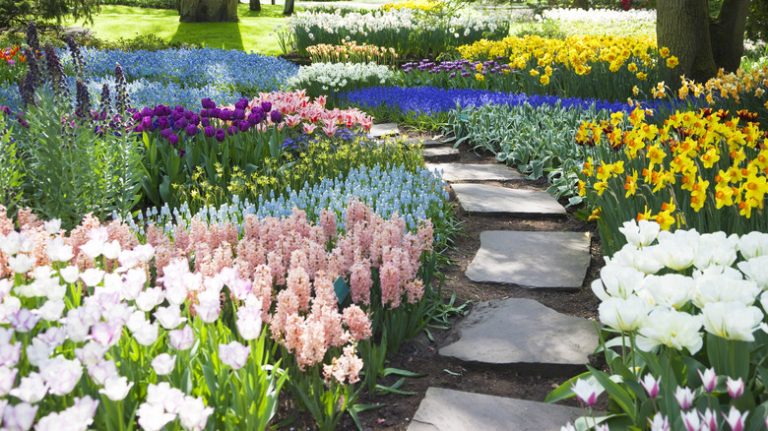Whether you’re mapping out a colorful garden for your yard or simply dressing up the exterior of your home for the sake of curb appeal, nothing adds class and sophistication to an outdoor space quite like roses. With roughly 30,000 cultivars, a specific rose should exist to satisfy every homeowner’s diverse interests. But making some common mistakes, including failing to give them the right amount of nutrients or never pruning your plants, could stunt your flower’s growth or, in worse cases, result in an early death. To avoid these errors, make sure to supply your crop with the proper amounts of fertilizer and water while also pruning and deadheading roses regularly and in a timely-fashion.
Despite being an overall low-maintenance flower in terms of care, roses can be rather picky about their growing conditions. They especially enjoy direct sunlight and rich, well-draining soil. Roses are also perennials, meaning they can survive for several years without dying off each winter like their annual counterparts. Instead, the plants enter a state of dormancy during the coldest months of the year, which allows them to bounce back and produce blossoms the following spring. Although many perennials drop blooms naturally once they’re done growing and select varieties of roses aren’t exempt from this characteristic, roses in general are far from being entirely self-sufficient. The flowers appreciate any extra care their gardeners give them, rewarding them with enhanced growth, more abundant blossoms, and an overall healthier and longer-lasting plant.
First mistake: Sparingly adding nutrients

When it comes to watering, roses can be difficult to please. Generally, the flowers enjoy receiving copious amounts of water throughout the spring and summer months, but especially during the summer. Under temperate weather conditions, gardeners should aim to administer about 4 to 5 gallons of water each week, adjusting their water intake as humidity and temperatures fluctuate throughout the flowering season.
The plants also prefer deep drinks over shallow ones, which allows every element of their root system to remain hydrated during scorching summers and keeps water off the plant itself. As such, watering via drip irrigation systems and watering cans is typically preferred over methods that mostly skim the surface, like overhead sprinklers. However, roses also dislike wet feet, so be careful not to overwater the flowers to the point where their roots are saturated for extended amounts of time. Your flowers will droop if they’re receiving too much water or if they’re not receiving enough.
Roses also require proper fertilization to produce the healthiest and longest-lasting blooms. These versatile flowers can grow in a variety of soil options, but they prefer a pH level between 6.5 and 7 and will likely need some additional minerals and nutrients typically found in organic matter. Oftentimes, fertilizers that contain nitrogen, phosphorus, and potassium (NPK types) are used. Further, don’t fertilize your plant in late fall or during the winter, as this could cause new growth that wouldn’t survive the cold weather.
Second mistake: Never trimming

Roses, like many other similar varieties of flowering plants, tend to grow best when they’re routinely snipped as they develop new leaves, stems, and blossoms. Pruning, which is the act of removing diseased and overgrown parts of a plant in order to expedite new growth, is highly recommended for roses. The process helps the plant refocus its energy on producing more flowers and foliage in place of the pieces trimmed away. While the practice isn’t always necessary to ensure blossoms return the following spring or summer, pruning gives roses a much stronger chance of returning healthier and fuller during their next growing season. In other words, refraining from trimming your roses may lead to your next batch of blooms appearing smaller, weaker, or fewer in number compared to batches from seasons prior.
For most rose species, pruning will produce the best results if completed in the late winter or early spring, ultimately depending on the warmth of your home climate which directly influences how early or late your roses begin to sprout new growth. Regardless, wait until the final frost of winter passes before pruning to keep your plant from dying. Deadheading is another beneficial exercise for many roses. The practice differs from pruning mostly in that it focuses solely on removing a plant’s dying flowers, but the purpose remains the same. Unlike pruning, you can deadhead as needed throughout the growing season, stopping in the fall to prepare for winter dormancy. .



